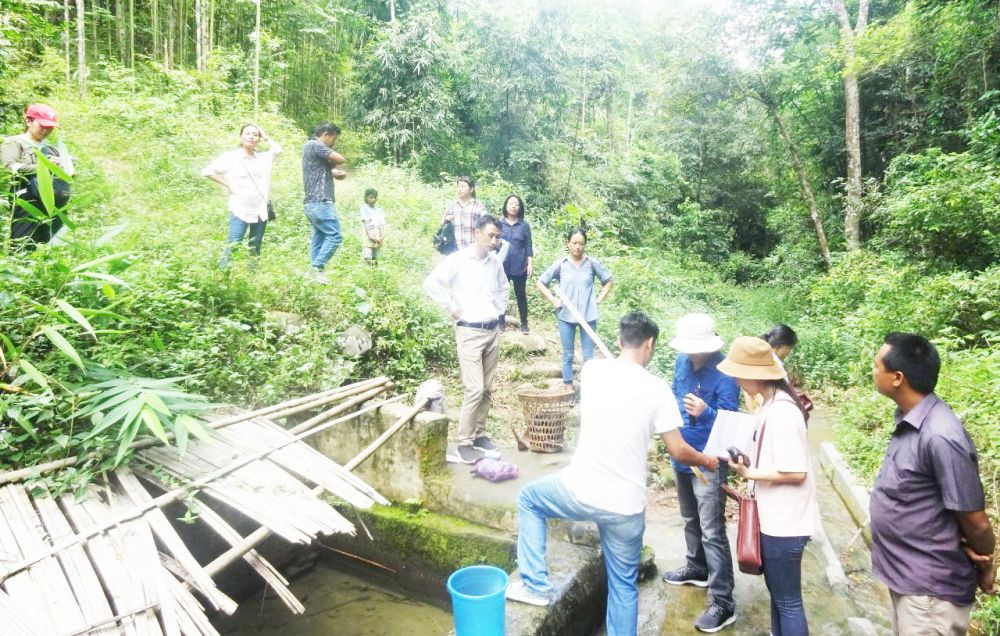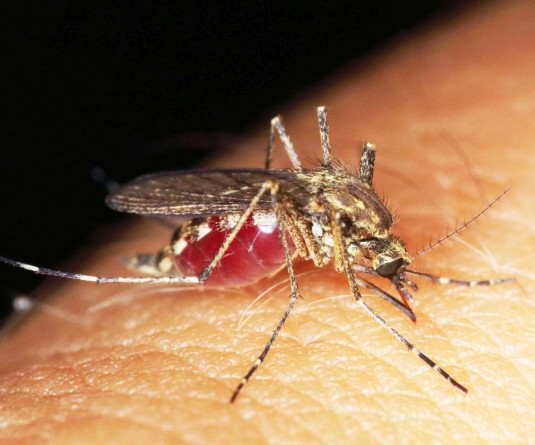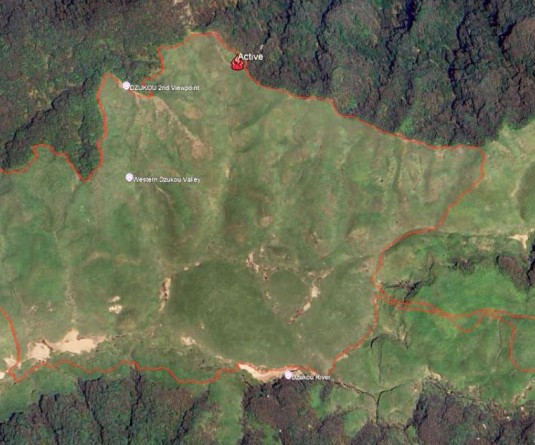Officials of LRD, Dimapur along with the village elders visiting a natural spring site for spring inventorisation in Ruzaphema village on September 2, 2019. (Morung File Photo/LRD handout)

Morung Express News
Dimapur | November 14
In a boost to water management in Nagaland, springshed development in the State has been recognised as one of the Best Practices of Water Management in India.
It was featured in the NITI Aayog’s country-wide ‘Compendium of Best Practices of Water Management’ released last week and designated as ‘Adaptation To Climate Change Through Participatory Springshed Development.’
According to the NITI Aayog, the Nagaland model can be replicated in other regions.
The 2021 Compendium listed out the “best practices” on the following themes: agriculture; groundwater management; watershed development; water infrastructure; and climate risk and resilience.
“The compendium gives prime importance to the role of the community in water management. Considering the bottom-up approach of planning, it encourages states and non-profit organizations to highlight the practices of participatory governance,” it added.
Nagaland’s best practice
As per the compendium, the springshed development programme was implemented in 11 districts of Nagaland in 2016, with People’s Science Institute (PSI), Dehradun and Land Resources Department (LRD), Nagaland as the implementing agency.
There has been a drastic decline in groundwater availability, leading to reduced discharge of water in springsheds across the Himalayas. A user association came up in 2016, along with the LRD, to restore and regenerate springs, it said.
The initial target was regeneration of 11 springs (1 spring each in 11 districts) based on local hydrogeology through involvement of local communities, especially women, it informed. Another objective was “knowledge dissemination and communication to ensure sustainability of the programme.”
The intervention included field surveys of 50 water-scarce villages by the Department of Land Resources to collect baseline information, followed by the preparation of an inventory of springs.
Another was capacity building and trainings focusing on identification of springs, discharge measurements, estimation of water demand and supply gaps, and hydrogeological studies. Criteria for selection of springs and treatment measures were also prepared.
The outcomes included increased spring discharge during the lean season in 10 out of the 11 pilot projects, the compendium noted.
It also led to reduced demand and supply gap as the spring “discharge increased from 3 lpm (litres per minute) in January 2017 (pre-implementation period) to 5 lpm in June 2018 (post implementation), it added.
Know the project
The precursor to this project is found mentioned in the LRD’s annual administrative report 2015-16. It informed the Department had taken the initiative for springshed development in 2015 to address the issues of regenerating springs, streams and underground flows.
In September 2019, the LRD updated that in collaboration with the Rural Development (RD) Department, a “multi-stakeholder initiative to provide drinking water security through Springshed Management in 100 rural villages” of Nagaland was in “full swing.”
It involved three entities namely— Mahatma Gandhi National Rural Employment Guarantee Act (MGNREGA) in the capacity of a funding agency; the North East Initiative Development Agency (NEIDA), an initiative of Tata Trusts, to render coordination support; and the LRD as the implementing agency for Nagaland.
In June 2021, the Tata Trusts also informed that 1,857 households in 95 villages of Nagaland, covering 23 blocks across 11 districts, were “all-weather water sufficient” due to rejuvenation of 105 springs in 95 villages.”
“The project also provides an innovative model of Public Private Partnership where the resources from existing government programmes are leveraged with non-government funding partners joining hands to provide solutions to rural communities,” it added.
Later in September, the during the Project End Consultative Meeting of stakeholders, it was informed that out of the targeted 100 rural villages, 96 villages have completed the project while 4 villages could not complete due to various reasons.
The stakeholders were NEIDA, LRD and RD, PSI Dehradun and Advanced Centre for Water Resource Development & Management (ACWADAM), Pune.
Speaking at the event, Commissioner & Secretary, LRD, Vikeyie Kenya then informed that the Department first initiated the development programme on a pilot basis targeting one village in each of the then 11 districts with technical support from PSI Dehradun and ACWADAM, Pune.
He maintained that over the years, the Department has established infrastructure with state-of-the-art software and hardware support in planning and monitoring for watersheds and springshed management besides having a GIS cell and field laboratories. He informed that there are 33 Assistant Inspectors (AIS) and watershed development team members (WDTs), and 13 officers trained as para-hydrogeologist through the State Level Nodal Agency and experts from PSI and ACWADAM.
He claimed that a success rate of 96% is a ‘good achievement’ as 106 springs covering most of the water-stressed blocks and villages were rejuvenated.
In a disclaimer, the NITI Aayog noted that all data or information in the compendium has been “self-certified by the respective implementing agency of the best practice.”





